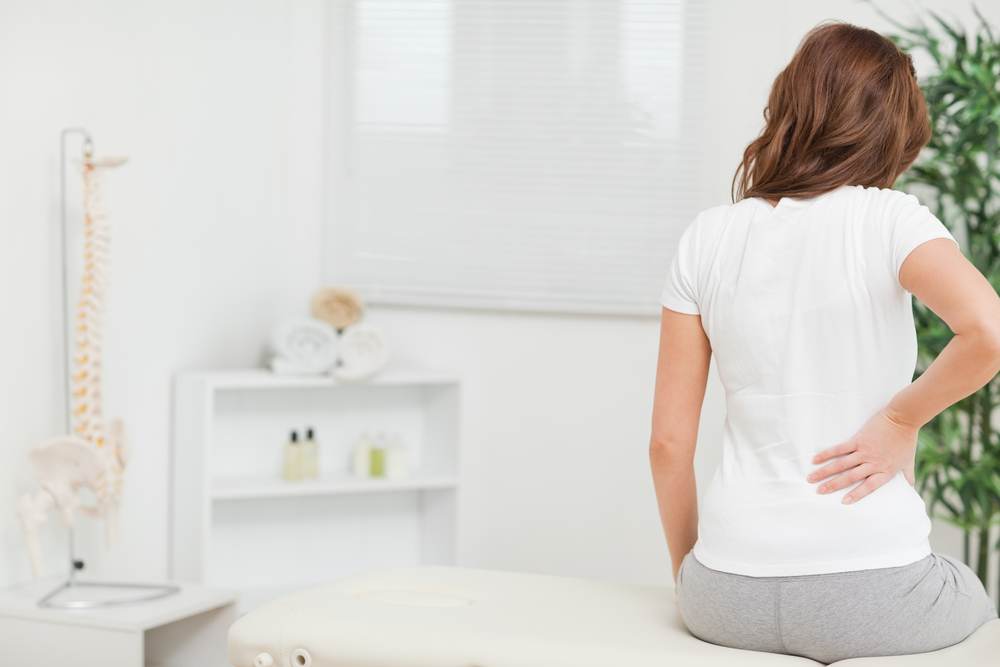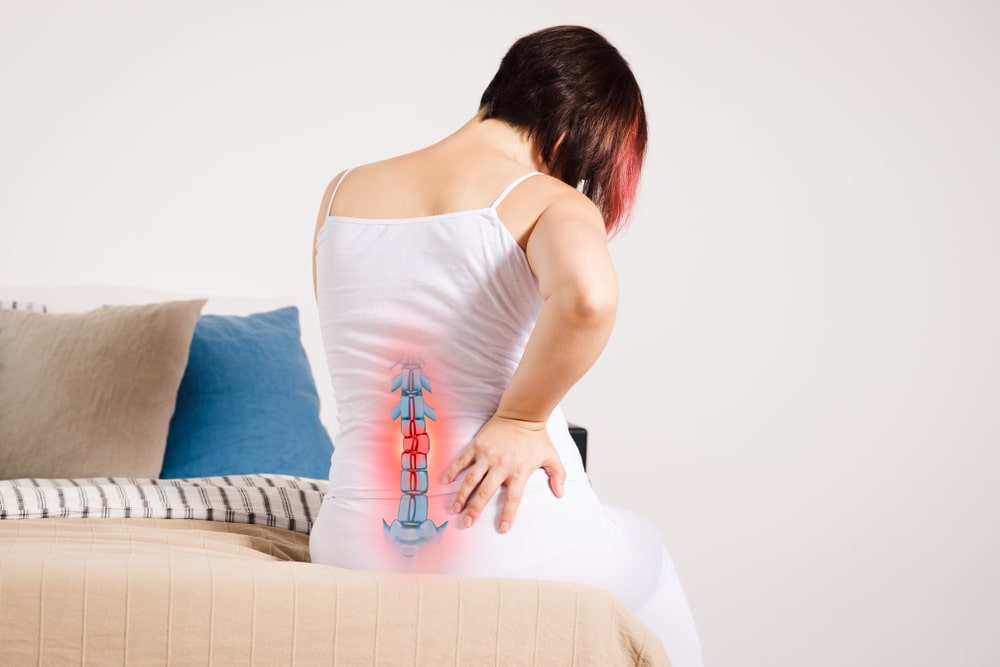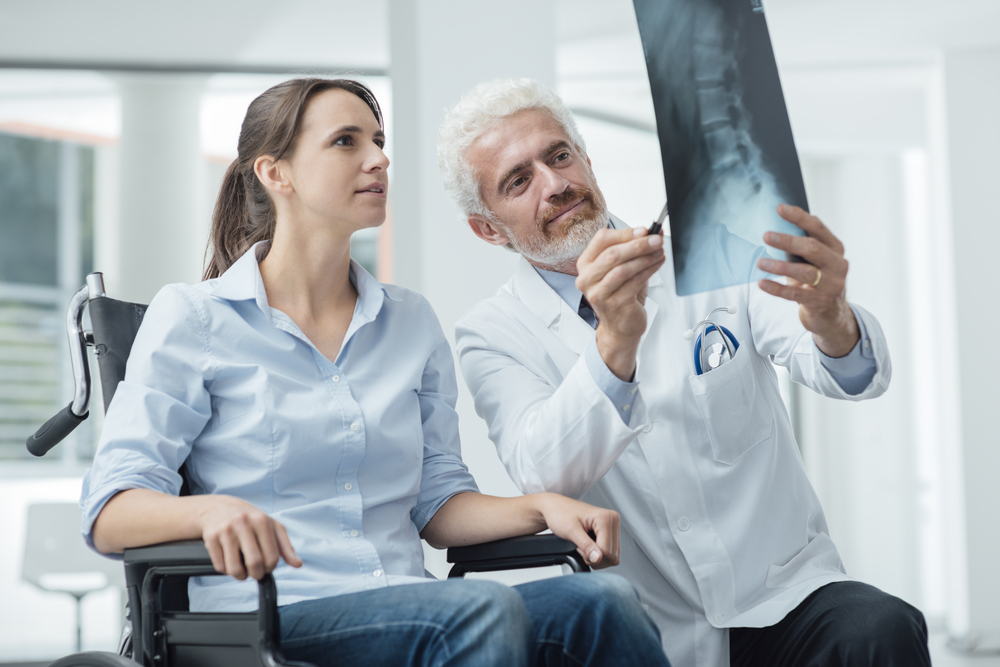 More people live with chronic back pain than most of us probably realize. If you’re one of the many who suffer from back discomfort day after day, you know how challenging it can be to live a normal life. At AICA LIthia Springs, our orthopedic doctors, chiropractors, and physical therapists are committed to educating you on the benefits of our services and helping you achieve an improved quality of life.
More people live with chronic back pain than most of us probably realize. If you’re one of the many who suffer from back discomfort day after day, you know how challenging it can be to live a normal life. At AICA LIthia Springs, our orthopedic doctors, chiropractors, and physical therapists are committed to educating you on the benefits of our services and helping you achieve an improved quality of life.
Anatomy of the Low Back
The lower section, or lumbar region, of the spine is made up of 5 individual vertebrae, L1-L5. The spine has four sections of vertebrae; the cervical (upper), thoracic (mid back), lumbar (low back), and sacral (tailbone) regions.
These vertebrae enclose and protect the spinal canal and cord while supporting most of your body’s weight. Each vertebra is separated from the others by a spinal disc; these discs are a rubber-like structure encased by a thicker membrane. Spinal discs operate like padding, preventing vertebrae from grinding against each other while also acting as shock absorbers when the spine moves. The spine is held together by bands of ligaments and muscles that support and help the body move.
Low back pain is usually the result of injury or strain to these structures but can also cause referred pain in surrounding areas such as the sacrum and pelvis.
Quality of Life and Disability
According to a study published by the Annals of Rheumatic Diseases, to determine the global impact of low back pain across the globe, low back pain is the leading cause of disability worldwide, affecting 1 in 10 people.
The same study documents the disability-adjusted life years (DALYs), a formula that combines years of life lost from early death and the number of years living in pain of chronic low back pain sufferers. The study shows that people who suffer from chronic low back pain have the highest number of years lost to disability.
The impact of chronic pain on a person’s mental health is immense. While pain is a normal aspect of life, a person’s brain is not meant to feel pain constantly. Chronic pain is often associated with the comorbidities of depression and anxiety, resulting in a lower quality of life.
People with moderate to severe back pain must deal with the impacts on their day-to-day life, both at home and at work. If pain increases, it can become difficult to perform daily tasks you were previously able to do with no trouble.
Back pain caused by nerve damage can also affect your balance, feeling in your hands and feet, and referred pain. This pain can limit the types of jobs and activities a person can perform. With job limitations, chronic pain sufferers can be stuck in low-income and potentially uninsured positions.
The three factors, quality of life, chronic pain, and mental health, cycle back on each other in what can feel like an endless loop, often preventing patients from resolving any of these difficulties.
One of the top goals at AICA Lithia Springs is to diagnose and treat your chronic back pain promptly and efficiently to help you live life to its fullest.
Sources of Chronic Low Back Pain
 Multiple sources state that often the source of a patient’s low back pain can be hard to diagnose, but tend to agree that early intervention can help with recovery and accuracy of diagnosis. Back pain is considered chronic if it persists for three or more months.
Multiple sources state that often the source of a patient’s low back pain can be hard to diagnose, but tend to agree that early intervention can help with recovery and accuracy of diagnosis. Back pain is considered chronic if it persists for three or more months.
Symptoms to Discuss with Your Doctor:
- Tightness across the lumbar spine
- Stiffness and deep aches
- Trouble bending over or picking up items
- Persistent mild to moderate pain that doesn’t abate
- Sharp or stabbing pain
- Referred pain, numbness, or tingling in buttocks, legs, or feet
Your doctor may also discuss potential external factors or lifestyle habits that contributed to the initial pain. A sedentary lifestyle is one of the leading causes of low back pain. Unfortunately, in a world with a largely office-based workforce, you have to become creative to get your body up and moving.
External Causes
Trauma to the spine often results in acute injuries that can resolve with time and treatment but can also lead to chronic back pain. Trauma can come from a variety of sources:
- Falls
- Car accidents
- Sports injuries
- Muscle strain
There is no reason to deal with injuries and pain alone; AICA Lithia Springs has staff on hand 24/7 to take your calls if you suffer an accident and need treatment and a support system to help you through the process.
Degenerative Conditions
These conditions can develop from overuse, lifestyle, age, or a result of trauma. Low back pain can begin with the natural degeneration of vertebra, discs, or ligaments typically seen between ages 30-50, affecting men and women in approximately equal numbers.
- Disc degeneration – characterized by a narrowing of the spinal disc, causing increased pressure on the vertebra and losing cushioning for movement
- Spondylosis – general degeneration of the spine that occurs as people age, overworking of the spine, and sometimes a long-term side effect of trauma
- Inflammatory processes – osteoarthritis, rheumatoid arthritis, and spondylitis
- Compression fracture – occurs when the body of the vertebra collapses
Nerve Conditions
- Spinal stenosis – narrowing of spinal canal putting pressure on the spinal cord
- Disc herniation or bulging – disc being compressed by surrounding vertebra
- Sciatic – nerve impingement
Congenital Conditions
Spine irregularities apparent at birth can result in chronic low back pain. Conditions that can result in long-term pain such as:
- Scoliosis – curvature of the spine
- Spina bifida – spinal cord/canal malformation
- Lordosis – excessive curvature of the lumbar spine
Diagnostic Procedures
To determine if your pain originates from bone, muscle, or organs, your doctor might order imaging of the areas you feel pain. X-rays can give orthopedists a look at the skeletal structure of your low back. X-rays can reveal any fractures of vertebrae, bone degeneration, or narrowed distance between vertebrae indicating a disc losing volume, bulging, or herniating.
For a better look at the disc structures, the spinal canal, and the spinal cord condition, more advanced imaging can be used. These include but are not limited to a CT(computed tomography) and MRI (magnetic resonance imaging).
Nerve testing, or an electromyography (EMG), can also be performed to determine damage to the nerves.
These tests will help the orthopedic doctors at AICA diagnose your condition and develop a comprehensive plan with support staff to help improve your pain and quality of life.
Improving Quality of Life for Chronic Back Pain Patients
Things you can change at home
The first line of defense against chronic back pain is free and can be done at home. Sticking to the recommended 150 minutes of exercise per week will help keep your muscles and joints healthy and strong. A strong core of muscles helps support your back and can prevent back pain. Cardio exercise increases blood flow and oxygen to your muscles, reducing pain and improving recovery time.
Things you can change at work
If you work at a desk, take precautions to keep your body moving throughout the day.
- Utilize a sit-to-stand desk
- Use an ergonomic chair or an exercise ball instead of a chair
- Make sure you stand up for at least 1 minute once every hour
- Place lumbar support cushions on your desk chair if needed
Medical interventions
As previously mentioned, early intervention is key to resolving back pain and managing chronic back pain. A combination of medication and simple at-home treatments are often enough to combat acute back pain and can positively impact chronic back pain.
- Medications
○ Anti-inflammatories
○ Opioids – only as prescribed by your doctor and in moderation
○ Muscle Relaxers
- Simple in Home Treatments
○ Ice/heat packs
○ Rest
○ Resume cautious but normal activity to prevent muscles from tightening and increasing pain
If the above treatments do not relieve the pain, you should seek more medical advice. AICA Lithia Springs provides several treatments that work in complement with first-line treatments.
- Physical Therapy – improves muscle tone, flexibility, and strength to support your spine
- Chiropractic treatment – AICA can assist with relieving pain caused by misalignments of the spine. These misalignments can cause nerve impingement, muscle strain, and postural discomfort.
- Cold laser therapy – using laser beams at a specific wavelength to promote tissue regeneration. This can reduce inflammation and, as a result, reduce pain.
- Spinal decompression
- Steroid injections – injections into the affected disc space to reduce inflammation and pain
Unfortunately, there are times when all of these interventions don’t work. In the continuing journey to restore optimal function and quality of life, our specialists might recommend surgical intervention. Fortunately, these procedures can be minimally invasive and performed by your orthopedic specialist at AICA Orthopedics.
- Vertebroplasty – injecting cement between vertebrae to repair compression fractures
- Discectomy – removal of a herniated and/or damaged disc
- Spinal fusions – increase the strength of the spine usually by fusing two vertebrae with either bone grafts or plates and screws
- Spinal cord stimulator – a small device implanted in the back that sends electrical impulses along the spinal cord to disrupt pain signals to the brain.
Where to Go for Help
 If you are experiencing chronic back pain, please contact AICA Lithia Springs to schedule your evaluation with one of our specialists today! Regardless of whether your pain was caused by a car accident, sports injury, or repetitive motion injury, we are a full-service diagnostic orthopedic center, offering assessment, imaging, and treatment. From start to finish, your treatment will be handled by our team.
If you are experiencing chronic back pain, please contact AICA Lithia Springs to schedule your evaluation with one of our specialists today! Regardless of whether your pain was caused by a car accident, sports injury, or repetitive motion injury, we are a full-service diagnostic orthopedic center, offering assessment, imaging, and treatment. From start to finish, your treatment will be handled by our team.
